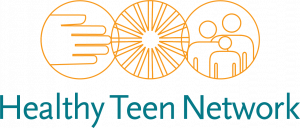Puberty is a time of physical, emotional, and social changes that can cause some young people great angst. Equipping students with the knowledge and skills about these changes can help them navigate through this challenging time and emerge strong, happy, and healthy. This workshop will provide you with a number of lessons to teach students about the changes of puberty, and will help you improve your skills on addressing this sensitive topic in an inclusive way. This workshop can be tailored to meet the specific needs of your group, school, or agency. All content is aligned with the National Sexuality Education Standards, the National Teacher Preparation Standards for Sexuality Education, and the Professional Learning Standards for Sex Education.
Training Hub
The Sex Education Collaborative Training Hub lists trainings for sex educators, facilitators, and other professionals on best practices for sharing important information with clients and the public. From teaching anatomy inclusively to effectively addressing bias in the classroom to addressing racial justice and equity in sex education, the Training Hub includes trainings, technical assistance, and policy support from state, regional, and national leaders in the field of sex education.
Please note: The Training Hub includes both in-person and online professional trainings. If you see a training you are interested in and it isn’t listed as virtual, please reach out directly to any of our members to find out what's possible!
Trainings Offered by State-Based and National Organizations
Displaying results 71 - 75 of 137Puberty 101: Teaching about the Birds and the Bees
- Indicator 2 (K-12): Demonstrate three student-centered instructional approaches that support a variety of learning styles. (S)
- Indicator 2 (K-12): List three physical, three social, and three emotional changes that occur during puberty.
- Indicator 3 (K-12): Identify three practices that students can adopt for maintaining healthy habits beginning during puberty.
Strategies to Foster Youth Resiliency
Studies of adverse childhood experiences confirm what many of us know from working with young people—children raised in adverse environments are more likely to experience negative developmental outcomes, including teen pregnancy. However, many young people thrive despite the odds. What makes these young people resilient, and what can youth-serving professionals do to help foster resiliency through sexual and reproductive health programs? This workshop is dedicated to answering these important questions. Participants will review current trends in resiliency research, including the connection between resiliency and positive youth development, and examine personal attitudes around what it means to be resilient across different cultural contexts. They explore factors that make young people resilient and develop new strategies for fostering resiliency among youth, including using strengths-based facilitation and implementing support structures.
Objectives:
- Describe how positive youth development can improve youth outcomes.
- Examine personal attitudes about what it means for a young person to be resilient.
- Identify individual qualities associated with resiliency in youth.
- Identify individual educator strategies and agency-level support structures that build resiliency in diverse groups of youth.
- Implement an action plan for developing strengths and improving support structures in existing youth programs.
Visit ETR's Training & TA Form to submit your request and receive cost information.
- Indicator 4 (K-12): Describe three effective response strategies when a student or school community member has been hurt or wronged by bias.
- Indicator 5 (K-12): Describe three strategies educators can use to acknowledge and proactively work to mitigate the impact of bias on their students’ sexual health and multiple, intersecting identities.
- Indicator 2 (K-12): Describe how verbal and nonverbal expression of personal values, and comfort with topics related to sex education, could impact one’s teaching
Introduction to Trauma-Informed Approaches
In this training, participants will:
- Define trauma, toxic stress, and resilience.
- Describe the impact of trauma and toxic stress on the health and wellbeing of youth, families and communities.
- Recognize the signs and symptoms of trauma in youth, families, staff, and communities.
- Describe the core principles and services of a multi-tiered, trauma- and resilience-informed approach.
- Indicator 1 (K-12): Demonstrate three techniques to create an inclusive and affirming learning environment. (S)
- Indicator 2 (K-12): Demonstrate three strategies for creating culturally responsive classrooms. (S)
- Indicator 3 (K-12): Describe three elements of a trauma-informed approach to sex education.
- Indicator 4 (K-12): Demonstrate three strategies of a trauma-informed approach to sex education (e.g. giving trigger warnings before content on sexual assault and allowing students the right to pass as appropriate, etc.). (S)
Building Support for Sex Education in Schools
What does (and doesn’t) motivate people to listen to messages about the value of sex education? In this mini-course, practice building effective messages by working through real-world scenarios using evidence-based communication techniques.
- Indicator 1 (K-12): Describe three health (e.g. physical, social and/or emotional) and/or academic benefits of sex education for young people
Virtual PD - Climate Setting When Teaching Sex Education
Virtual Professional Development is a simulated classroom where teachers can practice teaching student avatars using short scenarios and support from an instructional coach, so they can quickly learn and master the skills they most need to be effective. With upper elementary, middle and high school classrooms, Virtual PD has scenarios for teachers of all grade levels across a wide range of topics aligned with the Professional Learning Standards for Sex Education (PLSSE). You can watch the video here (link is external) to learn more about Virtual PD.
Using the Virtual Professional Development classroom simulator, the educator will practice implementing Climate Setting When Teaching Sex Education with the student avatars. In this scenario, the educator will be meeting with their class for the first time. In this simulation with the five students, the participant will create ground rules, explain why they are needed when teaching sexuality education and reference them when needed. The participant will need to demonstrate the ability to use climate-setting strategies to foster a safe and productive learning environment.
- Indicator 1 (K-12): Demonstrate three techniques to create an inclusive and affirming learning environment. (S)
Additional Trainings offered by out-of-state organizations
- ‹ previous
- 48 of 49
- next ›
What’s Triggering Our Teens? Intimate Partner Violence Edition
Participants will gain knowledge of how intimate partner violence impacts the mental, sexual and reproductive health of young people who witness and/or experience it. Participants will brainstorm strategies to intervene and learn about local, state, and national resources.
This training is designed for:
- Educators
- Teachers
- Substitute Teachers
- Counselors
- Coaches
- Parents
- Clergy
- Community Workers
- Healthcare Providers
- Healthcare Staff
- Clinicians
- Indicator 1 (K-12): Describe three distinguishing characteristics between healthy and unhealthy relationships, involving family, friends, and/or romantic partners.
- Indicator 2 (K-12): Explain three ways that healthy relationships can positively impact personal well-being.
- Indicator 5 (K-12): Describe three ways to help students set and respect personal boundaries in relationships.




